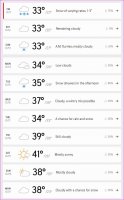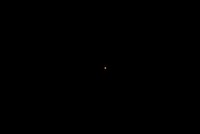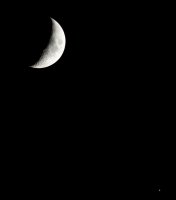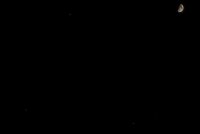That does not jive with what i'm reading. The moon width is about 31 arc minutes, the separation will be 6.1 arc minutes. The diameter of Jupiter plus Neptune is about 36.8 arc seconds or 0.6 arc minutes. That means the combination will be about 6.7 arc minutes in diameter which is about 0.22 the diameter of the moon.
My 100- 400mmL f/5.6 would need a 3X plus a 2X TC or 2400mm equivalent to fill the frame height to 90% and I'd have a effective aperture of about f/32 which means a fairly long exposure at a reasonable ISO but doable.
Obviously, you are going to need far more than 2400 mm to fill a FF sensor to even half the sensor height with the Jupiter/Neptune conjunction. One half the sensor width would take even more. I did not bother to calculate it because the effective aperture of such a lens would be very tiny and a very long exposure. A camera lens that long is also nonexistent except for telescopes.
One suggestion is to take a video and stack the frames. My R5 will take 4K or 8K video and I might be able to stack frames. That would give a lot more pixels. Its overcast tonight or I could play with a video and see what I get. 1/5 the size of the moon gets pretty small but is huge compared with the size of a planet alone.
My PowerShot Zoom arrives tomorrow. That might be something to easily get a idea as to what's possible with a real camera and I would not need to drag out all my heavy duty stuff. I don't hold much hope for it to be useful in the dark, I think that trial would easily confirm that. It might see the moon though.
Here is a R5 photo of the moon at 2400mm. Its about 90% of the frame height.
Moon at 2400mm on R5 | Canon Rumors




